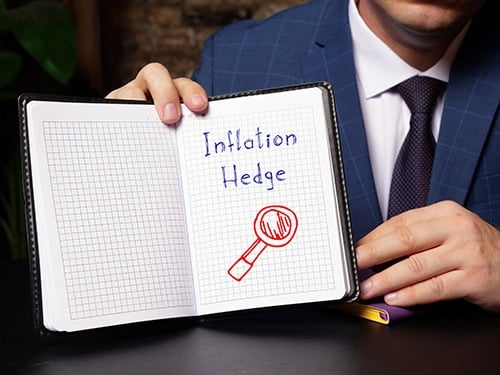702-660-7000
702-660-7000

Those who proudly label themselves as economists while embracing Modern Monetary Theory (MMT) are reminiscent of the tailors in the classic tale The Emperor’s New Clothes—with one key distinction. In the original story, the tailors were fully aware of their deception; they knew they were spinning lies. Today’s Modern Monetary Theorists are both the tailors and the emperor: they are the deceivers and the deceived.
They tirelessly promote the idea that our currency, backed merely by faith in the United States government, is impervious to the forces of inflation. They parrot this narrative not out of cynicism, but because they believe in the illusions they’re selling. They even applaud decades of deficit spending—spanning over 58 years—as evidence that endlessly printing money has no negative consequences. But in doing so, they retreat into a world of fantasy, ignoring the hard and unyielding truths of economic reality. Belief may shape policy, but it can never override the immutable laws of finance. Make-believe, no matter how sophisticated, never cancels out what is real.
In reality $100 back in 1963, 58 years ago, would have purchased 8.65 times more than what $100 can purchase today. In other words, Modern Monetary Policy (MMP), has destroyed 765% of the purchasing power of the U.S. dollar since 1963.
Contrast the inflationary results of MMP with wages, which have only increased by 480% since 1963, and there is a 63% gap between inflationary costs and real wages over the past 58 years. This gap is responsible for fueling the rapid decline of upward mobility in the middle and lower classes across America. In fact, MMP encourages the transfer of wealth from the lower and middle classes to the upper class, especially to the top 10% of the wealthiest. In 2020 the richest 1% of Americans captured 35.2% of the wealth generated nationwide, while the next 9% of America’s richest, captured 34.8%. Combined, this accounts for 70% of all wealth generated being transferred to the top 10% of the richest class in America in 2020. This is why Modern Monetary Theorists believe in their fairy tale so heartily. It actually makes them lords and aristocrats over the rest of the population, until it all collapses. You can only dilute a solution down so far until it is no longer measurable. Then it becomes worthless.
So how do we combat this fatal system? Do we roll over and accept MMT and MMP without a fight? Or is there a way to win this monetary game even though the deck of cards has been stacked?
Contemplate, for a moment, a unique kind of purchase—one made over time through consistent, periodic payments that never increase. Imagine that what you’re purchasing not only holds its value but is guaranteed to increase in worth year after year. Now picture that this increase in value will, without exception, surpass the total amount you ever paid into it. On the surface, it may sound too good to be true. But such a scenario isn’t hypothetical—it’s a reality when viewed through the lens of long-term economic history.
Suppose this purchase began in 1963. The payments, locked in at 1963 rates, would still be the same today. However, because of inflation driven by Modern Monetary Policy (MMP), the value of each dollar has dropped dramatically. In fact, that same payment today effectively costs 765% less in real value than it did back then. The reason? Inflation has steadily eroded the purchasing power of the dollar over the last 58 years, while the amount owed on this purchase remained fixed. The real cost of those payments has declined with each passing decade.
Despite the diminishing real cost of each payment, the value of what was being purchased has grown beyond the sum of all those payments combined. This means that not only did the purchase protect value—it created it. In doing so, it served as a genuine hedge against the inflationary effects of MMP.
But the benefits don’t stop there. The growth in value that this purchase generates is often tax-preferred, meaning that when the value is accessed, it may be done so without triggering a tax liability. This creates an even more powerful wealth-building mechanism. When this value is leveraged to create additional assets or income, it compounds the protective effect, further shielding the individual from the destructive consequences of inflation and currency devaluation.
What began as a simple fixed payment plan becomes a powerful financial strategy—one that not only counters inflation, but also enhances wealth creation over time.
Of course, the purchase described here is Participating Whole Life Insurance (PWLI). A purchase which those who believe in and propagate MMT deride and scorn. They do this because PWLI keeps money (your money) from being controlled and managed by them. And one must never forget that those who control the money rule the world.
Keeping your money in PWLI, allowing it to grow tax-preferred while hedging against inflation, reduces the rate at which wealth is transferred to the top 10%. PWLI ownership is the only way for 70% of wage earners to build an estate. Yet, Modern Monetary Theorists continue to rant and rave against PWLI ownership because it checks their fundamental objective…to control the money and therefore the masses.
There is nothing new under the sun. Malicious and immoral people have always worked to devise ways to rule over those whom they regard as inferior. Unfortunately, many of the masses have been led to believe a lie. The lie that MMT and MMP will create a utopian of equality for all. Yet in reality MMT and MMP is just another evil plot to enslave and destroy the majority.
Be smart. Don’t play the MMP, MMT game. Build an estate for yourself using PWLI. Begin today by calling 702-660-7000. We can help you.
 Tomas P. McFie DC PhD
Tomas P. McFie DC PhD
Tom McFie is the founder of McFie Insurance and co-host of the WealthTalks podcast which helps people keep more of the money they make, so they can have financial peace of mind. He has reviewed 1000s of whole life insurance policies and has practiced the Infinite Banking Concept for nearly 20 years, making him one of the foremost experts on achieving financial peace of mind. His latest book, A Biblical Guide to Personal Finance, can be purchased here.